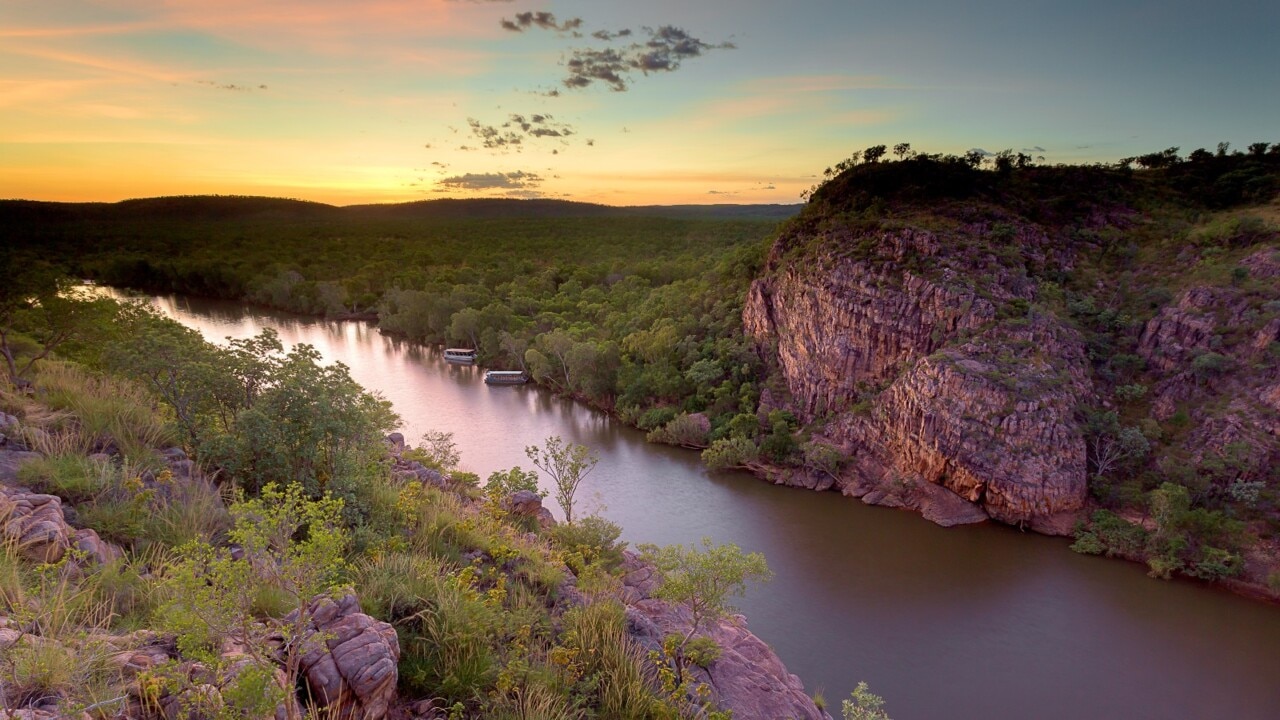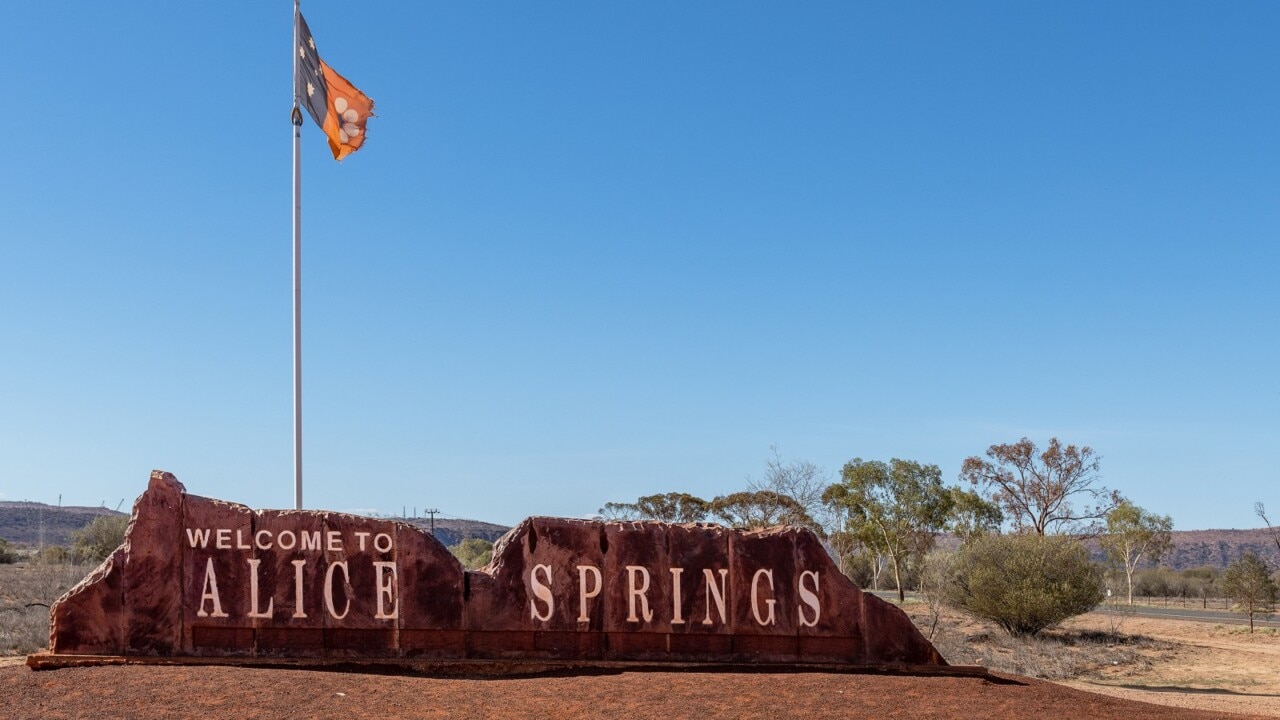Indigenous Australians live in third-world conditions near Alice Springs: Liberal senator Kerrynne Liddle
Only 15 minutes from Alice Springs, Australians live in conditions that could only be described as unimaginable and third-world.

A cement slab in the dirt. That is what Kate Pitjara and her family call home.
She, her niece Miranda Pepperill and other family members made the 230km journey from the Utopia town camp to the outskirts of Alice Springs about two years ago for Ms Pepperill to receive dialysis at the hospital.
Now they live underneath a tarpaulin set up for protection from the heat, which can soar into the low 40s during summer, with sleeping bags, clothes and books strewn across the cement foundation and a rundown car providing shelter for some of the family.
While just a 15-minute walk from the centre of Alice Springs, the place where the family have found themselves living may as well be in a different world.

Speaking to The Australian as the children rushed to catch the bus to school, Ms Pepperill said she wanted housing, preferably outside of a town camp, with running water she could access without walking to and from her home with a bucket.
“I would like to live in our own house,” she said. “I have asked (the government) for housing. I go to hospital three times a week. I’ve been on dialysis two years.”
Kerrynne Liddle, a South Australian Liberal senator born in Alice Springs, visited the outskirts of the town to see the conditions of people living rough and document what she found to reveal to ordinary Australians a situation that could only be described as third-world.
“The family exists in living conditions unimaginable to almost every Australian,” Senator Liddle said.
“Issues such as voice are simply not a priority here. Real action – not talk – is the priority.”
Ms Pepperill said she and her carer had applied for crisis accommodation years earlier, but she had never heard back, with the average wait time for public housing in Alice Springs currently sitting at six to eight years. There are almost 1400 people waiting for a spot in public housing in the town.
The family live on a patch of land in between the Charles Creek and Hoppy’s town camps, both of which are run by the Tangentyere land council.
A Tangentyere spokeswoman said residents of Hoppy’s town camp had raised concern with the Northern Territory government and authorities about rough sleepers nearby. The unresponsiveness of agencies reflected “place-based discrimination”, she said. “Tangentyere has been advocating for improved service delivery and resources for homeless and rough campers for many years,” the spokeswoman said.

“Town camp residents have empathy for rough campers but are often unfairly impacted by the lack of a co-ordinated response from governments and service delivery agencies.
“Residents … have raised concerns about rough campers staying adjacent to their town camp, and these have been reported to Department of Territory Housing and Families, NT Police and the Alice Springs Town Council.”
The NT government would not provide details of the family’s situation nor confirm if they were on the waitlist for public housing.
“Central Australia has a transient population with many people regularly travelling from surrounding communities to Alice Springs to access medical services, do shopping or visit family,” a THFC spokesman said.
“The concrete slab between (the two town camps) is a known informal camp site and outreach teams regularly visit the area.”
The spokesman pointed to a $31m injection in 2021-22 to 19 non-government organisations that provided homelessness services, and a $2.1bn investment from the NT and commonwealth governments in 2017 for a 10- year period to improve remote housing.Indigenous Minister Linda Burney said 10 local organisations would receive a share of the $48m announced by Anthony Albanese on his visit to Alice Springs last month, including Tangentyere Council, Central Australian Women's Legal Services and Desert Knowledge Australia. “Certainty in access to safety and community wellbeing services is critical for First Nations communities, especially children and young people living in and around Alice Springs,” Ms Burney said.

Among the programs being funded are prisoner in-reach, better transport to get people back on country, residential rehabilitation and even a program using horses for therapy.
NT opposition housing spokesman Joshua Burgoyne visited Ms Pepperill and her family last week and said he was shocked by what he saw.
“In Alice Springs there are a huge amount of people sleeping rough in the river and in small tents,” Mr Burgoyne said. “Some people choose to live that way; it’s freeing for them. But I have never seen such a large number of people living like this together, with their only shelter being a tarp.”
Mr Burgoyne wrote to Housing Minister Selena Uibo requesting immediate assistance for the family, who he said had been living rough for at least a year in the extreme heat of Central Australia.
Federal Labor MP Marion Scrymgour said there was a major issue with housing in the NT. Ms Scrymgour, whose electorate of Lingiari covers most of the territory said the Prime Minister’s $250m Central Australia Plan – the allocation of which is due to be detailed in the budget – would go some way to addressing the issue.








To join the conversation, please log in. Don't have an account? Register
Join the conversation, you are commenting as Logout